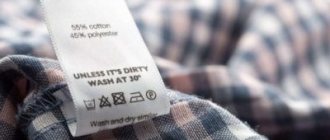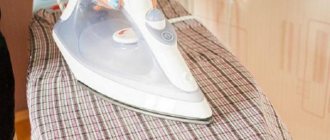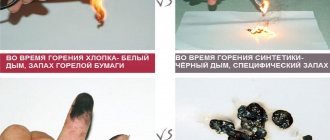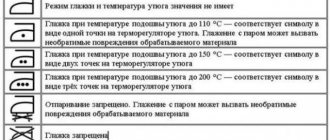With a wide variety of clothing, the shirt is still available in both men's and women's wardrobes. According to the rules of etiquette, a shirt is a person’s face. It is unlikely that anyone will want to deal with a person who is wearing a dirty and wrinkled shirt. In order not to make a mistake in front of your future boss or colleague, you need to look neat and beautiful.
First of all, focus on the collar and cuffs, because they catch the eye first. Based on many years of experience, people have stereotypes about how to properly iron a shirt. Even if your shirt is short-sleeved, you will have to iron it.
Ironing rules
Before you start ironing, read some rules. With their help, you will iron the item and avoid many common mistakes.
- After washing your shirt, hang it on hangers and straighten it out. Thanks to this, there will be no unnecessary folds on the fabric.
- Start heat treatment of the fabric while the shirt is still damp. If the shirt has had time to dry, moisten it with a spray bottle.
- How to iron men's shirts correctly? The answer to this question is simple - from the wrong side and you need to start from the collar. Ironing on the right side can be harmful to the fabric and may cause it to fade and become shiny.
If you've ironed the front side of your shirt and there are marks or shine on it, read on to learn how to remove those marks from your clothing.
- Ironing should begin with small parts (collar and cuffs), then sleeves and fronts, and the back should be ironed last.
- Each material requires its own temperature. If you choose it incorrectly, you may burn the shirt or fail to iron the item.
Selecting the temperature mode
A modern iron with a thermostat, as well as a convenient ironing board, will allow you to quickly iron men's shirts made of different materials.
Here's how to properly iron a product, taking into account that each type of fabric requires a certain temperature regime:
- Slightly damp items made of viscose and cotton with the addition of polyester are ironed at a temperature not exceeding 120 °C.
- To iron cotton, select a mode of 150–160 °C; the overdried product will need to be steamed.
- To iron linen fabric, use strong pressure and intense steaming at a temperature of 180–200 °C. The fabric is ironed from the inside out.
- 100% viscose items are ironed slightly damp at 120°C. To avoid stains, it is not advisable to spray the product or apply steam.
- Silk items should only be ironed dry at 60–70 °C.
- Fabric with a compressed effect is ironed at 100 °C without steam.
Caution is exercised when working with synthetic fabrics. As soon as the iron becomes difficult to slide, stop ironing and reduce the temperature.
It is recommended to iron dark-colored shirts from the wrong side. This rule also applies to items made of shiny fabrics and shirts with embroidery.
We recommend reading: All about removing resin from clothes
It is preferable to use distilled water for steaming. Then dirty spots and streaks will not appear on the ironed clothes, which is possible when using hard tap water.
Algorithm for proper ironing
To prevent the shirt from getting wrinkled, it is necessary to iron a long-sleeved shirt in a certain sequence. It is not necessary to constantly iron in this order, but while you are learning, it is recommended to use this method:
- collar;
- cuffs;
- sleeves;
- shelves;
- back.
This ironing method is based on the principle “from simple to complex.” Once you learn how to iron a shirt correctly, you can come up with your own method and sequence of actions.
New technologies, or Iron - yesterday
Not so long ago, irons that produced steam and sprayed water seemed like a miracle of technology. Today, such a device will not surprise anyone. In addition, ironing a shirt that is difficult to iron is not so easy with a regular iron. New achievements of technological progress are coming to the aid of housewives. Take a closer look at the next three.
- Steam generator. Both in form and in essence the device is quite close to an iron. The main difference is that it continuously delivers a powerful stream of dry steam. The steam generator smooths out even heavily wrinkled items.
- Steamer. The action is based on an intense stream of hot steam, which removes wrinkles, makes the item look fresher, disinfects and removes odors from the fabric. The main advantage is that you can iron clothes in a vertical position, without an ironing board. But a steamer cannot be considered a complete alternative to an iron, because in the instructions for use you can find restrictions on types of fabric.
- Steam manken. An inflatable mannequin shaped like a human torso. It quickly dries and smooths shirts, jackets, and sweaters. The device is intended for professional use and therefore cannot be found in the public domain.
Ironing step by step
The collar is the first thing people will notice. When you put on a shirt, it is necessary that it stands up and is carefully ironed.
When ironing a long-sleeved shirt, avoid creating creases; they are not needed for shirts.
Collar
- start this process from the inside to avoid smoothing out the folds;
- smooth out the front part of the collar;
- Do not iron along the fold.
The collar is the first thing people will notice. When you put on a shirt, it is necessary that it stands up and is carefully ironed.
Cuffs
- The cuffs must be ironed on the front and back sides;
- give the cuff the required shape;
- iron along the fold.
The cuffs are one of the first places on a shirt that people pay attention to, so they need to look impeccable.
Sleeves
- fold the sleeve along the seam and place it on a flat surface;
- start ironing the item from the shoulder to the cuff;
- turn over to the other side and iron again;
- do not iron the sleeves close to the edge to avoid creases;
- repeat all steps with the second sleeve.
If in an office or other place there is no dress code regarding wearing jackets, then your sleeves will be visible to everyone. It is important that the sleeves are ironed and there are no arrows on them.
Shelves
Tips and Tricks
The “no crease” function is very helpful when washing clothes. It will help avoid severe creases. If the washing machine is not equipped with such a program, then limit yourself to a gentle spin. You should not set the maximum spin speed when washing shirts.
If the label is cut off
On the inside on the side seam there is a label with recommendations for washing, care and ironing of the product. If there are none or the shortcut is cut off, you will have to select the mode yourself:
- 100% cotton - optimally iron at 150°C, steam;
- polyester - the temperature must be reduced to 110°C;
- crushed cotton - ironed at 110°C without steaming;
- viscose - iron only when wet at an iron sole temperature of 120°C.
- a mixture of linen and cotton - requires ironing at a high temperature of 190-200°C and the use of a steamer;
- linen shirt - iron at high temperature - 210-230°C;
- dense fabric - press on the iron. Military and police shirts are made from this fabric.
A silk shirt is ironed a little differently: it needs to be completely dried and ironed through a thin fabric. Using a spray bottle or steam may leave streaks.
Tags and labels are best left untouched by the iron. They are made of synthetic fabrics that can melt from a hot sole. Or it can become rough and prick the body when worn.
If the iron breaks
Sometimes you urgently need to iron a shirt without an iron at home. For example, when there is no electricity, the iron breaks down. Don't panic, you can use one of the following tips.
- Special wash. Simply wash a shirt made of low-wrinkle fabric and hang it on hangers until dry. After this method there are no folds left. But you shouldn't wring out clothes. Just fasten the buttons, straighten the shirt, turn up the collar and wait for it to dry.
- Hot steam. You can turn on the hot water in the bathroom and hang a shirt on a hanger nearby. The steam will smooth out the wrinkles. A steamer will also cope with this task, if you have one in the house. You can also resort to using a boiling kettle.
- Irrigation. Take a spray bottle and pour one part each of vinegar, water and fabric softener into the flask. The water must be distilled or clean boiled. Instead of conditioner, you can use fabric softener. Hang the shirt on hangers and sprinkle with this miracle composition. After drying, the clothes will look ironed.
If the sleeves are short or the shirt is new
You need to iron a short-sleeved shirt in the same way as a long-sleeved shirt. The process is made easier by the absence of cuffs. A steam generator will help you iron a shirt that is difficult to iron with a regular iron. This item is indispensable in families where shirts are worn frequently.
The step-by-step instructions for ironing a new shirt will not differ significantly from the usual method. But it is more difficult to iron a shirt brought from the store. Proceed in two stages.
- First wash or rinse the shirt in warm water. If this is not possible, then moisten it generously with water and start ironing.
- Press the extra steam button frequently and apply pressure to the iron. If possible, use a steam generator.
It is difficult to iron shirts after boiling. If none of the usual methods help, try ironing the product through a damp cloth. If your shirt constantly wrinkles, for example, from riding in a subway car, or from sitting at your desk at work, then you have chosen clothes made from the wrong fabric.
If there is no board
Not having an ironing board doesn't mean you have to wear wrinkled clothes. Any hard, flat surface can perform its role. You can arrange ironing on a table or sofa. If the floor covering is not afraid of high temperatures, it is permissible to iron clothes on thick fabric on the floor. However, it is better to cover the surfaces with a thick blanket folded several times.
An unusual way to iron clothes without an ironing board is directly on yourself using a hairdryer. Put on a slightly damp shirt and dry it directly on your body with hot air. The method is suitable for women's clothing made from delicate fabrics. Using this technique, clothes are smoothed on a hanger.
Video on the topic
With detailed instructions on how to properly iron a long-sleeved shirt, you'll be able to complete the task with ease. But keep in mind a few more tips: cooled fabric wrinkles more easily. Therefore, if time permits, let the ironed part cool before moving on to the next one. You need to hang the shirt in the closet after it has cooled completely. Be sure to check the steam before ironing, it must be clean. Sometimes scale or rust flies out of the soleplate of the iron with steam. This will come as an unpleasant surprise. Therefore, it is better to iron a white shirt from the wrong side. The same should be done with dark tones to avoid streaks on the front part.
How to iron a shirt as quickly as possible
You may not learn how to iron a shirt, but what to do if you are short on time and need to iron the shirt. With the help of simple tips, you can easily cope with this problem:
- When washing, do not spin. When you take your shirt out of the machine, you don’t need to wring it out, just hang it up. During natural drying, it is unlikely to wrinkle and you will not need an iron.
- Put the wet shirt on yourself; as it dries, all the folds will straighten out without outside help.
- Exposure of the shirt to steam is a good option in this case. Steam the shirt with an iron and it will quickly smooth out, leaving no wrinkles.
- spread the backrest on one side along the seam;
- iron along it;
- run the iron through the center;
- iron from the second part along the seam.
You bought a new shirt, but it doesn't fit. What to do in this case? The shirt size can be reduced using an iron. This method is suitable for a shirt made of cotton fabric. Use an iron with a steamer to iron the wet shirt for 15–20 minutes. This time is enough to reduce your item by 1-2 sizes.
Ironing sleeves and cuffs
Before ironing the sleeves themselves, you need to process the cuffs. This part consists of several layers of fabric, so to achieve the best result, you need to apply pressure on the iron.
Lay the cuff wrong side up and begin ironing from the corners towards the center. The underside of the cuffs, unlike the front side, is not reinforced with additional material, which is why creases may appear during ironing. To avoid wrinkles, the cuffs should be smoothed towards the center as the iron moves.
Having processed the wrong side, turn the part onto the face and iron it away from the face. Carefully iron the seam that connects the cuff and sleeve. If the cuff is designed for cufflinks, it should be ironed on both sides, then folded, aligning the loops and ironing the edge.
Before ironing, lay out the sleeve so that the seam is located at the top center. Then iron the material, slightly stretching it to avoid unnecessary creases and arrows on the sleeves. Having reached the bottom, you should stop ironing a few centimeters from the cuff. Then turn the sleeve and iron the side part, also not reaching the cuff. There is no need to iron the armholes: their turn will come later, while ironing the back and slats.
Turn the sleeve over again and iron the central section. If wrinkles appear during ironing, they should be ironed with the tip of the iron. Then turn the sleeve with the clasp up.
Next, the armband will come in handy. The sleeve is pulled over it with the cuff forward, after which the part of the sleeve adjacent to it is smoothed. If you don’t have an armband, you can roll up a towel or thick material and iron it. Then iron the fastener bar on both sides, fasten the button on it and iron the place where the bars meet. Iron the second sleeve in the same way.
Sometimes you may need to iron the sleeves of a shirt with arrows. This can be done by folding the sleeve in half and ironing it in the right place.
How to iron a shirt as quickly as possible
You may not learn how to iron a shirt, but what to do if you are short on time and need to iron the shirt. With the help of simple tips, you can easily cope with this problem:
- When washing, do not spin. When you take your shirt out of the machine, you don’t need to wring it out, just hang it up. During natural drying, it is unlikely to wrinkle and you will not need an iron.
- Put the wet shirt on yourself; as it dries, all the folds will straighten out without outside help.
- Exposure of the shirt to steam is a good option in this case. Steam the shirt with an iron and it will quickly smooth out, leaving no wrinkles.
Iron the front and back of the shirt
When processing the shelves and back, you need to carefully iron the seams. To avoid creases, the fabric should be slightly stretched. Before you start processing the back, you need to iron the shelf on the side of which the buttons are located. To do this, you need to walk the nose of the iron along the space located between them. In some products, the strip is also ironed from the inside out.
Then place the product with the wrong side up, iron the seam near the collar and begin to move the device down, with the blunt side of the sole forward. This will allow you to stretch the material a little and remove the “waves” that appear on the bar.
After ironing the front, move the shirt so that the side seam of the armhole is placed on the ironing board and iron it. Then, moving the product, iron the side seam and back. To avoid the formation of folds in the seam area, the material should be slightly stretched. Having ironed the back, you should move on to the shelf with loops: iron it at the very end.
What is the difference between ironing male and female models?
Women's shirts and blouses are often decorated with decorative elements: embroidery, appliqué, sewn beads or buttons, metal overlays, etc.
Often the collar on a women's shirt-blouse is decorated with different types of stripes and overlays
Therefore, it is necessary to iron such products more delicately:
- Ironing should begin from the collar. If it has soft stripes made of fabric, braid or lace, then gently iron them with the nose of the iron through gauze or thin cotton fabric. If there are hard linings, then they should be bypassed without touching the hot base.
Any smooth embroidery on a shirt should be ironed carefully, choosing the appropriate heating mode for the iron. - If the material of the stripes throughout the blouse is too delicate (or, for example, the embroideries are made with shiny threads), then the sleeves and back of such clothing should be ironed from the inside out.
It is better to iron sleeves with embroidery from the wrong side so that the colored threads do not fade or stick to the hot iron - Next, you should iron the seam at the collar and gradually lower it, moving the iron with the back side forward. Iron the shoulders of the blouse and the yoke, if there is one.
The shoulders and yoke of a woman's blouse are ironed in the same way as a man's shirt. - When ironing shelves, start with small parts, carefully ironing darts and pockets, and then iron larger parts.
Darts and pockets on women's shirts should be thoroughly ironed so that the material does not bulge in the most visible place - Finally, the back of the shirt is ironed - if there are darts at the bottom of the back, then they need to be ironed separately, smoothing the ends of the darts with the nose of the iron. And then iron the top of the garment up to the collar.
When ironing darts on the back of a woman's blouse, slightly stretch the material, smoothing their ends with the tip of the iron
Exploring shortcuts
The first thing to start with is studying the label on the product. If you do not read this information, you may damage the fabric. After all, for each material there are certain temperature limits, which are not recommended to be exceeded. Iron symbols are often printed on labels to indicate the acceptable temperature range for the product.
It is important to follow all instructions on the tag attached to the shirt to avoid damaging the fabric.
The interpretation of these icons is simple: the more dots are drawn on a small iron, the higher the heating temperature can be set on the adjustment wheel of a real iron.
Decoding the icons on the labels tells you which ironing mode to choose for specific clothes
Sometimes the tag inside the clothing is uncomfortable to wear, so it is cut off.
If you receive a product without a label, it is better to first set the temperature to low. Then add it little by little until the fabric begins to yield to the iron. If the iron begins to glide poorly and stick to the material, you should reduce the temperature slightly.
Preparatory process
Before you start ironing, you need to prepare the available tools that may be needed. Namely, an iron, an ironing board and a spray bottle. It is advisable that the board have a special device for ironing sleeves. It is this that allows you to iron shirt sleeves without arrows. But you can replace this device with other available means, for example, a rolled up towel.
If the iron does not have a steam function, you will need a spray bottle of water. And also two towels, but always light in color so as not to stain your white shirt. One needs to be spread on the surface of the ironing board. Through the second, it will be possible to iron the shirt so that stains do not form on it and it does not lose color.
Fabrics and modes
To keep shirts in shape, they need to be hung ironed on hangers.
This is interesting. According to unofficial statistics, about 90% of men do not know how to iron shirts. These are either married individuals whose ironing duties are assigned to their wives, or those who prefer an informal style of clothing that does not involve wearing classic shirts.
If you want your shirt to last longer, select an ironing mode that matches the fabric from which the item is made. (This rule, by the way, applies to all clothing).
Let’s say right away: if the composition of the fabric is unknown, then we start with the lowest temperature, increasing it gradually.
Artificial fabrics
For a polyester shirt, you can safely set it to 110 degrees, but it is better to refuse steam or set it to minimum. Wrinkled shirts, which have been fashionable for several seasons, also look good at 110 degrees, but it is forbidden to turn on the steamer, as the folds will straighten out. For viscose, you can heat the iron to 120 degrees and add steam, but it is not recommended to turn on the spray bottle. Otherwise, you will have to rewash the shirt because of the stains that appear.
Natural
Cotton shirts should be ironed at 150 degrees with the steamer turned on to maximum. If the fabric contains cotton and linen, then the temperature can be increased to 180 degrees and also steamed thoroughly. The maximum temperature - 230 degrees - is required by flax. In this case, be sure to turn on the steam mode and the spray gun. Silk shirts are ironed at low temperatures, without steam, to avoid streaks, and only from the inside out. Otherwise, the fabric will begin to shine.
Helpful Tips for the Perfect Shirt
You can only iron a clean shirt, because under the influence of high temperature, even a slightly perceptible smell of sweat can intensify many times over. But it’s even worse if, after ironing, yellow spots appear on the material. It will be impossible to wash them off.
You can only iron a clean shirt
To make it easier to iron a dry shirt, you can lightly spray it with a spray bottle in advance or briefly hang the shirt on hangers in a bathroom filled with steam from hot water.
To prevent your shirt collar from getting wrinkled even in the closet, cut out a cardboard rectangle and secure it under the collar.











